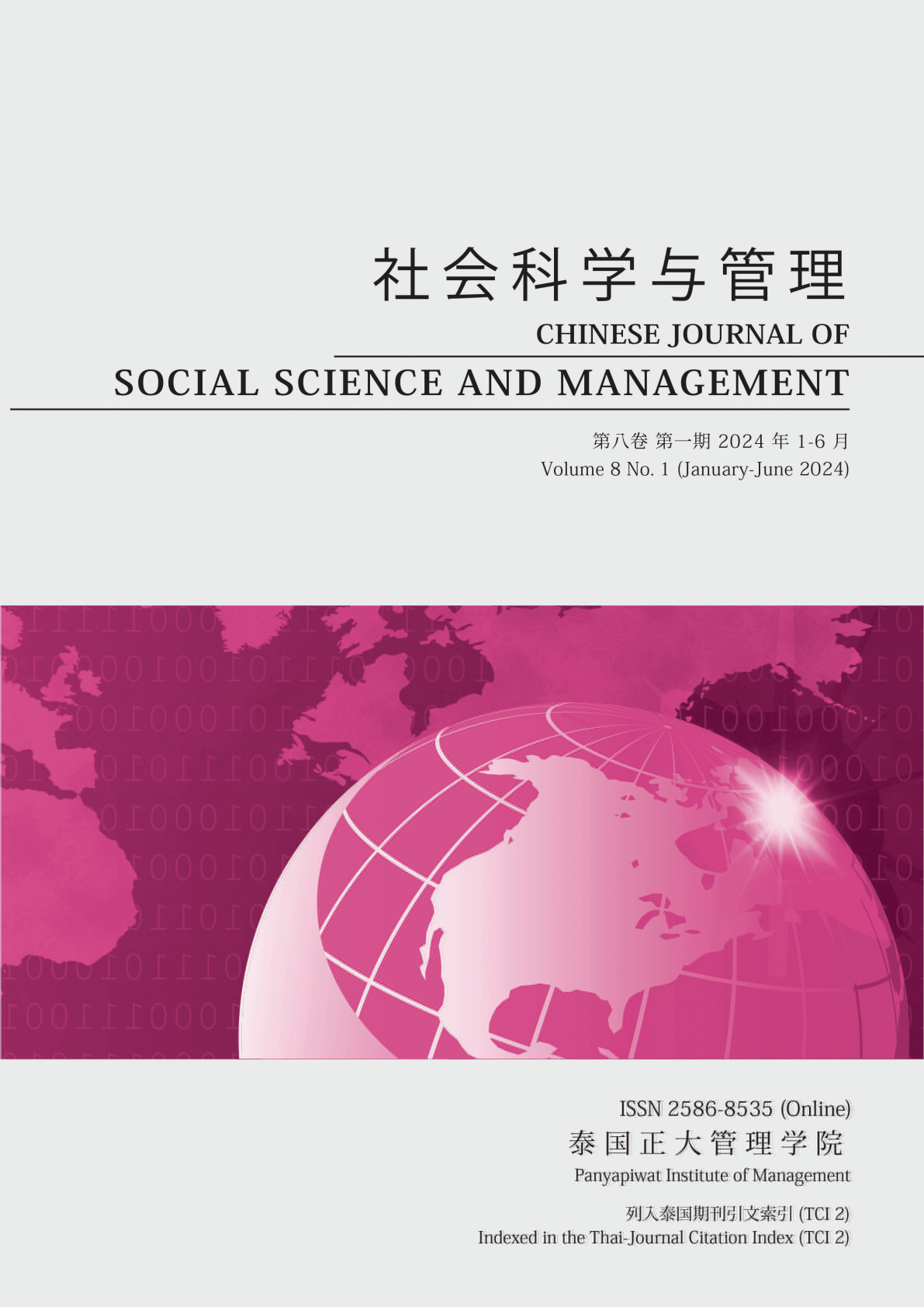A SYSTEMATIC REVIEW AND RESEARCH TRENDS OF COGNITIVE RESEARCH ON CONSTRUCTIONS OF CHINESE INTERNET BUZZWORDS FROM YEAR 2018 TO 2023
Main Article Content
Abstract
By organizing relevant literature on the cognitive study of Chinese Internet buzzword constructions from 2018 to 2023, this article has selected 21 documents from CNKI, Wanfang data knowledge service platform, and VIP information as subjects for summary. It discusses the current state of research in this field from four dimensions: research subjects and sources, research perspectives, research content and conclusions, and research trends. The study found that research during this period mainly focused on exploring the cognitive mechanisms of specific types of internet slang constructions. Additionally, the primary research process often adopts the perspective of constructional analysis“mini-triangle,”using the decomposable nature of constructions combined with various cognitive theories to explain their cognitive mechanisms and processes and to explore the reasons for their popularity. Moreover, recent years have seen the field’s research gradually transition from unitary theoretical analysis to a more diversified perspective. Finally, considering the characteristics of internet slang constructions and the social cognitive perspective, the author proposes potential future research directions.
Article Details

This work is licensed under a Creative Commons Attribution-NonCommercial-NoDerivatives 4.0 International License.
Chinese Journal of Social Science and Management Editorial Division
The Office of Research and Development, Panyapiwat Institute of Management
85/1 Moo 2, Chaengwattana Rd., Bang Talat, Pakkred, Nonthaburi 11120, Thailand
Tel. 02 855 01048 E-mail: cjssm@pim.ac.th
References
Bao, H., & Yang, S. A. (2023). Semantics, grammar, pragmatics exploration of internet buzzword “immersive XX”. Journal of Suzhou University, (4), 46-50. [in Chinese]
Chen, L. X., & He, Z. R. (2006). Analysis of memes in language. Foreign Language Teaching and Research, (2), 108-160. [in Chinese]
Chen, R. J. (2018). A construction grammar-based study of the construction of “I May X1 假 (Fake) X2” [Master’s thesis]. Sichuan Normal University. [in Chinese]
Chu, S. (2019). Cognition of “柠檬 (lemon) X” construction based on memetics. Journal of Heilongjiang University of Technology, (8), 148-151. [in Chinese]
Hou, G. J. (2015). The pragmatics of lexicology and construction grammar and its transition across three disciplines. Foreign Languages Research, (5), 17-21. [in Chinese]
Jin, M. F. (2022). Research on internet buzzwords with animal morphemes [Master’s thesis]. Jilin University. [in Chinese]
Li, F. (2018). An analysis of the rhetorical structure of “X+狗 (dog)”. Journal of Henan University of Technology (Social Science), (4), 71-84. [in Chinese]
Li, T. (2020). A study on the meaning construction of the internet buzzword Fo Xi X from the perspective of ground-based conceptual blending theory [Master’s thesis]. Yunnan Normal University. [in Chinese]
Li, X., & Yan, W. A. (2022). Cognitive pragmatic analysis of the construction of “Versailles X”. Journal of Xinyu University, (6), 79-84. [in Chinese]
Li, X. G. (2018). A study on the linguistic deviation of cyber-neologism constructions [Master’s thesis] Ningbo University. [in Chinese]
Lin, Z. Y. (2019). A preliminary exploration of the metaphorical understanding of the internet language “XX 体 (style)”. New Media Research, (16), 17-19. [in Chinese]
Liu, Z. J. (2021). A study of Chinese fashion language “X Dao Mei Peng You” from the cognitive perspective. Journal of Jinling Institute of Technology (Social Sciences Edition), (4), 45-50. [in Chinese]
Lu, X. L. (2015). Language choice and identity in terms of social cognitive linguistics. Foreign Language and Literature, (6), 70-74. [in Chinese]
Luo, Q. M. (2018). An analysis of the cognitive mechanism of the new “假 (Fake)” character formation from the perspective of conceptual blending theory. Crazy English Pro, (2), 22-24. [in Chinese]
Ma, S. Y., & Lei, L. (2022). A multidimensional analysis of the emerging construction “X Qian Wan Tiao, Y Di Yi Tiao”. Journal of Xinjiang University (Philosophy, Humanities & Social Sciences), (1), 138-143. [in Chinese]
Qi, W. L. (2023). A constructive study of internet popular phrase “XX 文学 (Literature)”. JinGu Creative Literature, (22), 120-123. [in Chinese]
Ren, Q. J., & Cao, W. (2021). Exploring the semantic features and cognitive strategies of the hot word structure “X friend”. Modern Communication, (13), 109-111. [in Chinese]
Tang, L. M. (2018). Analysis of network catchphrase construction “Yì Yán Bù Hé Jiù X” from cognitive pragmatic perspective [Master’s thesis]. University of Shanghai for Science and Technology. [in Chinese]
Wang, J. Y. (2020). An examination of the construct “Among X million things, Y is the first one”. Sinogram Culture, (17), 140-143. [in Chinese]
Wang, L. (1984). Collections of Wang Li. Shandong Education Press. [in Chinese]
Wang, S. H., & Peng, Y. X. (2022). Blending, integration and empathy: A research into cognitive pragmatic mechanism of online homophonic Chinese-English mixed idioms. Journal of Xi’an International Studies University, (4), 1-6. [in Chinese]
Xing, Q. H., & Liao, G. R. (2023). The cognitive mechanism and motivation of the network buzzword new “lei (泪) X”. Journal of Xinjiang University (Philosophy and Social Sciences), (3), 137-143. [in Chinese]
Yuan, Y., & Zhang, R. (2022). Interpretation of internet slang in the light of prototype category theory. Overseas English, (24), 81-83. [in Chinese]
Zhang, W. (2021). A cognitive study of Chinese network buzzword “Wo X Le” construction [Master’s thesis]. Xinjiang University. [in Chinese]
Zhao, Q. (2023). The inverse semantics and cognitive interpretation of the evaluative construct “(V) a very new X”. Journal of Fuyang Normal University (Social Science), (3), 44-49. [in Chinese]


